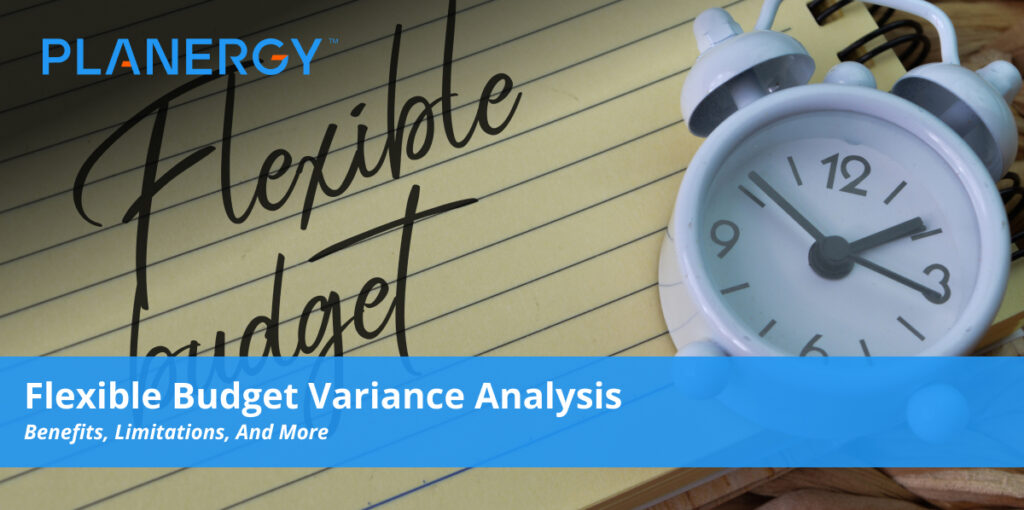Budgets are a financial tool that forecasts business revenue and expenses over a specific period of time.
These are quantified estimates of revenue and expenses. You can use a budget to plan for various activities or departments within a business. Budgets offer planning and control measures for an organization, and will always vary slightly from actual sales and actual output.
Budgeting is how a company plans for future production cycles. The initial estimate or static budget is a necessary part of planning.
Creating a second, flexible budget allows a company to evaluate its actual performance during the static budget period.
Variances or differences in the actual budget give a small business important information about performance elements such as overhead costs and profit.
A flexible budget is a kind of budget that can easily change input variables over time. It forecast revenues and expenses with a variety of activity levels. Unlike a static budget, it can include any activity level from the business. You can define the activity level differently for any business.
The cost of production can be divided into fixed and variable costs so flexible budgeting typically associates variable costs with changing activity levels.
The formula for a fixed budget is: Total Cost = Fixed Cost + (Variable Cost x Activity Level)
For accuracy, the variable cost should be used as a per unit or per activity level. Then, you compare the actual results with the forecast or plan budgets to analyze the variance.
The activity level in the equation may refer to various cost drivers affecting the variable costs such as direct materials, labor hours, or sales commission.
The Difference Between Static and Flexible Budgets
A business always begins with a static budget. For instance if the business period covers three months, the static budget is created before the period begins to cover the three months of operation.
The static budget is based on expected production figures. A business normally produces 1,000 units over a three-month period, they would use 1,000 units as the basis for their static budget calculation.
A flexible budget is prepared after the end of the budget period. The type of budget shows the business what the static budget should have been by using the actual numbers from the budget period.
For instance, if the budget covered the production of 1,000 units, but only made 600 units, then the flexible budget adjusts to account for only the 600 actual units.
The flexible budget shows the budgeted items from the static budget, including the cost and the expected sales, compared to the actual results.
Static budgets don’t allow for making changes in the variables based on a change in activity level. If a business changes its production level, its variable cost will change as well.
Static budgets don’t consider the changes that result in a change in the sales or production level.
The static budget approach monitors planned and actual results with a focus on achieving a set target.
As variables change over time, for instance, variations in raw material prices, the flexible budget is able to consider these changes, make adjustments and compare them with actual results. Revised budgets may still have variances with actual results.
The flexible budgeting approach helps to narrow the gap between actual results and standards due to activity level changes.
Typically, static budgets considered a fixed cost and set targets to achieve those results within the available resources. However, budgets are planned before actual production begins.
Management may decide to increase or decrease production levels depending on sales targets and a variety of other factors. At that point, the static budget acts as a starting point for the flexible budgeting approach.
The revised budget can be compared with actual results to analyze realistic variances.
Example of the Flexible Budget Performance Report
Flexible budgeting performance report analyzes actual results against the standard budgets. The differences are known as variances. If you have a positive variance, the company produced favorable results and achieved more than it had originally planned.
And adverse or negative variance means the organization was not able to achieve its target plans. Because the budget can be made for any activity, the variance also needs to be analyzed separately for each activity.
Variance analysis can help management understand the cost drivers and causes of the change whether the change is positive or negative.
Let’s say Green Company estimates their total production capacity to be 250,000 units. The sale price per unit is set at $15. Fixed production costs are estimated to be $800,000.
The direct material and labor costs per unit are $4.50 and $2.50 respectively. The company offers sales incentives to their sales force of 5% of sales.
What would be the total cost of unit production with a maximum utilized capacity of 85%? What would it be if the company achieved a 75% production efficiency or a 90% production capacity?
| Production Level | At 100% | At 85% Target | At 75% | At 90% |
| Sales Revenue at $15 | $3,750,000 | $3,187,500 | $2,812,500 | $3,375,000 |
| Direct Material $4.50 | $1,125,000 | $956,250 | $843,750 | $1,012,500 |
| Direct Labor $2.50 | $625,000 | $531,250 | $468,750 | $562,500 |
| Sales Commission at 5% | $187,500 | $159,375 | $140,625 | $168,750 |
| Fixed Costs | $800,000 | 800,000 | $800,000 | $800,000 |
| Total Costs | $2,737,500 | $2,446,875 | $2,253,125 | $2,543,750 |
| Profit Margins | 27% $1,012,500 | 23.23% $740,625 | 19.88% $559,375 | 24.62% $831,250 |
| Variance in Margins | -$181,250 | +$90,625 |
As the production level is set as an activity level to determine budgetary and actual results, the variance in margins can be analyzed based on production levels.
A 100% production level is impossible for any business. The business planned for an 85% reduction level.
With flexible budgeting, you can forecast the difference in margins if all other things remain equal and the variance and margins changes alongside production levels.
If a business has an unfavorable variance, it means they lost money. If they have a favorable variance, they made money, or surpassed a target.
What is a Flexible Budget Variance?
A flexible budget variance is a calculated difference between the planned budget and the actual results. In the example above, the company has set a target of 85% production capacity.
The budgeted or planned sales volume of 212,500 units yields a $740,625 profit.
If the company performs below targets and produces only 75% of the units they will produce an adverse variance of -$181,250.
If the company performs well and reaches an above-target performance, it will have a favorable variance of $90,625.
It’s important to note that your actual results will always be different from the planned target. Budgeting helps management to determine the factors that caused the variance.
Flexible budgets allow the management to adjust our plans and accommodate new targets. In the example, the company may have set a 90% target production rate, changed it to 85%, and still possibly achieved only a 75% production level.
Dance analysis cannot reveal the actual causes. Management may also adjust sales prices to achieve the favorable variance as long as it doesn’t affect their competitive edge.
Budgeting and variance analysis can help management to price their products at the optimal level while meeting Market competition and covering their production costs.
For instance, management may consider adjusting the sales price by 1 to 3% to generate excess revenue. Management can also work with operational management to reduce the number of idle labor hours and machine ways to help increase production capacity.
These minor adjustments can help the company to achieve more efficiency. A static budgeting approach would compare the results at the end of the production period as variances cannot be adjusted.
Pros of Flexible Budgeting
Budgeting gives companies useful information ahead of time that can help them plan better. The flexible budgeting approach can adjust to variances quickly and provide better controls and operations. The biggest advantage of flexible budgeting is the stress on operational efficiency required to achieve the target.
However, compared to static budgeting, it doesn’t fix all target costs. Flexible budgeting takes into account each activity that makes performance measurement a better control.
Flexible budgeting considers both fixed and variable costs with variance analysis. Management may set flexible targets to cover fixed costs and then gradually build on profits later. Variable costs assigned to sales activity or in percentage terms provide greater flexibility in profit analysis.
Flexible Budget Limits
New flexible budgeting provides greater advantages compared to static budgets, there are some limits involved as well.
- Flexible budgeting requires frequent change and those adjustments can be costly
- Operations managers that have limited or unplanned resources may not be physically able to adjust for revised activity levels or production.
- revised budgets may not still be accurately updated and actual results May fall short which results in a low staff morale.
- As with any budget, flexible budgets are simply forecast that may change by the time production actually begins.
A flexible budgeting approach is more realistic and practical than a static budget. It provides flexible targets for management with achievable results.
You should perform a flexible budgeting variance analysis for each activity to gain valuable information on discrepancies in planning and operations.




